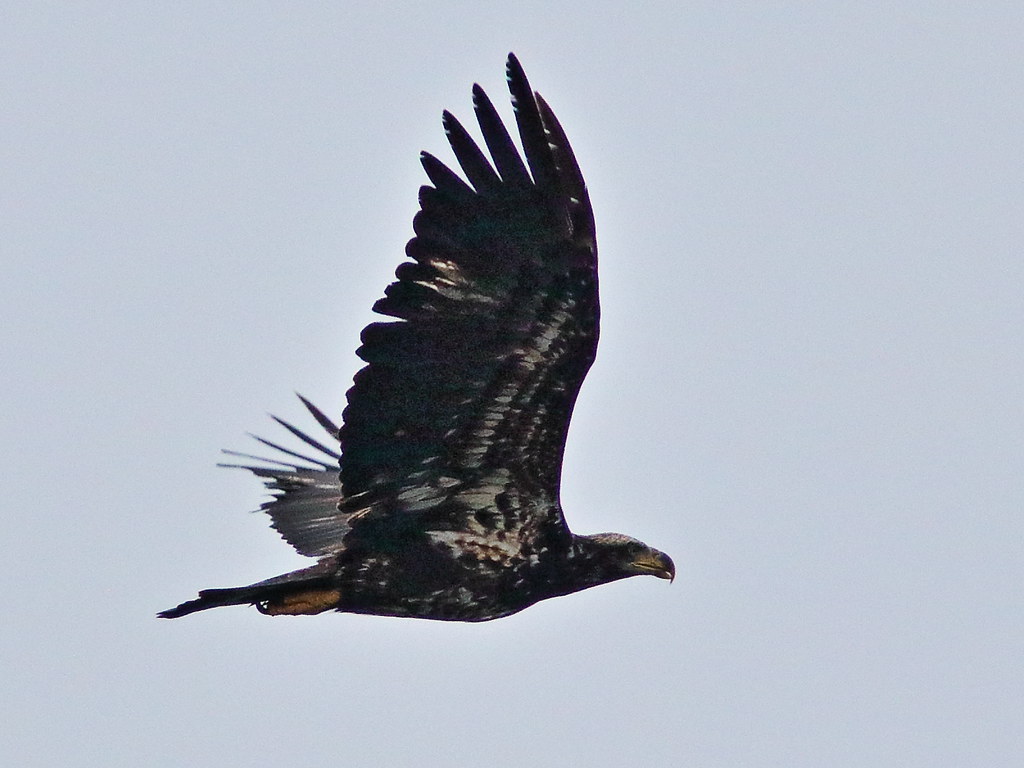|
Administrator
|
This morning (December 27) while visiting Chapel Trail Nature Preserve in Pembroke Pines, about 1.8 miles NE of the Bald Eagle nest, a visitor pointed out a large bird roosting on the cell tower next to the parking lot. It was an immature Bald Eagle, probably in late second year or early third year plumage, approaching the age of 2 years. If from a local nest this means it hatched in early 2018:

It differs from the late third year plumage of this eagle (approaching four years of age) which I photographed at the nest site on December 20:

However, because of individual variation, there is no fixed sequence of the maturation process, which may proceed to adult plumage in as few as 3-4 or up to 5.5 years. Generalizations about age of an individual eagle may not always apply.
On December 25 I photographed another immature eagle in west Miramar, about 1.8 miles SE of the PP nest. It appears to be a younger (Late first year or early second year, about one year of age) bird, probably not the same as the one I saw today. Yet the top of its head may have some white, which usually does not develop this early. Note that the trailing edges of its wings are irregular, as only a few juvenile flight feathers (remiges) are being replaced by shorter third year feathers with white markings. This causes juveniles to have a noticeable bulge in the wings near the body:

In the Chapel Trail bird, all of its secondary remiges are of uniform length like those of adults and are partially white, while the primaries are all dark. An early second year bird (age 1-2 years) would be expected to have an irregular trailing edge to its wings as the longer juvenile feathers are replaced by third year remiges. Note the uniform trailing edge in the (poor) flight photo and also the white patches in the secondaries:

In this cropped enlargement of its head, the eyes and bill show that the iris is turning yellowish and there is yellow at the base of the upper mandible. The lower mandible appears to be nearly yellow. Also, the top of this bird's head is a bit pale, a trait of third year birds:

|